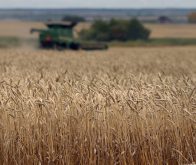Canadian news headlines have been dominated in recent weeks by reports of ongoing rail blockades and demonstrations in solidarity with the Wet’suwet’en nation — but the jury is out as to how the protests will impact Canada’s grain markets.
A daily report from Canada’s Ag Transport Coalition detailed the impact that blockades are having on rail operations across the country. The Feb. 19 report said “there are currently more than 850 cars en route to Prince Rupert, however, only some 300 of these cars are currently west of Edmonton.”
Read Also

Canadian canola prices hinge on rain forecast
Canola markets took a good hit during the week ending July 11, 2025, on the thought that the Canadian crop will yield well despite dry weather.
The coalition’s report further emphasized that “extended closure may cause the port to run out of loads for unloading before the end of the current week.”
However, cold weather has discouraged farmer selling, which has limited the amount of canola currently in commercial pipelines.
That, in turn, has mostly insulated canola prices from volatility within the market, although canola prices have been steadily lower on the week.
Canola futures held steady throughout the week despite end-of-month selling as traders roll their March positions into May. Nearby contracts were between $459 and $468 per tonne at the end of the week.
The Canadian dollar failed to provide any concrete direction to canola prices, hovering between 75.45 and 75.62 U.S. cents on the week.
Concerns of the COVID-19 coronavirus have continued to dictate a lot of market activity, although the spread of the disease appears to be slowing. China’s economy is expected to take a significant hit due to efforts to quarantine entire cities in order to quell the spread. Market participants are still waiting for Chinese buying in order to stimulate global economies.
The U.S. Department of Agriculture (USDA) on Feb. 20 published its annual agriculture projection report for the upcoming growing year. USDA expects producers to plant 85 million acres of soybeans — a considerable increase from the 76.1 million acres planted in 2019. Corn acres are expected to top out at 94 million acres, which would be up from the prior year’s 89.7 million acres. Wheat acreage is expected to total 45 million, which is steady compared to the previous year.




















